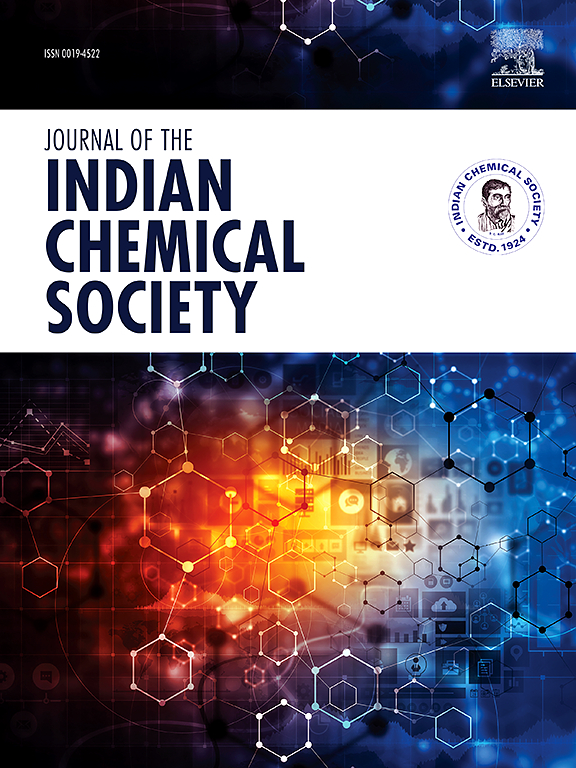染料敏化太阳能电池用bodipy -联吡啶和Re(bodipy -联吡啶)(CO)3Cl染料光谱和电化学性能的理论研究
IF 3.4
4区 化学
Q2 CHEMISTRY, MULTIDISCIPLINARY
引用次数: 0
摘要
密度泛函理论计算提供了bodipy -联吡啶偶联物作为染料敏化太阳能电池潜在染料的结构、光谱和电化学性质。我们的BODIPY, B在C3和C5位置分别含有苯乙烯和吡咯臂,但在C1和C7位置缺乏取代基,其光谱在627 nm (band-1)和413 nm (band-2)处有峰。一个和两个B单元通过它们的C8或C7原子连接到2,2 ‘ -联吡啶B的xx ’原子上(Bbx/Bbx_C7和BBbxx ' /BBbxx ' _C7共轭物)。这些附着物不会改变HOMO,但允许LUMO和HOMO-1轨道在b碎片上扩散,影响它们的轨道能量和吸收波长。C8连接增加了波段2的强度和红移,而C7连接则有利于波段1。B单元数量越多,谱带强度越大。在Re_BBb55‘和Re_BBb55’_C7配合物中,Re轨道不参与电子跃迁。BBb55 ‘和BBb55 ’ _C7具有较高的光收集效率、合理的电子注入和染料再生驱动力以及最低的重组能,是最佳的候选材料。它们吸附在TiO2纳米管表面,从B单元到B、两个B和TiO2产生光激发。本文章由计算机程序翻译,如有差异,请以英文原文为准。

Theoretical insights on spectral and electrochemical properties of BODIPY-bipyridine and Re(BODIPY-bipyridine) (CO)3Cl dyes for dye-sensitized solar cells
Density functional theory calculations provided structural, spectral, and electrochemical properties of BODIPY-bipyridine conjugates as potential dyes for dye-sensitized solar cells. Our BODIPY, B, carries styryl and pyrrole arms at positions C3 and C5, respectively, but lacks substituents at positions C1 and C7 and its spectrum has peaks at 627 nm (band-1) and 413 nm (band-2). One and two B units are attached via their C8 or C7 atoms to the xx’ atoms of 2,2′-bipyridine, b, (Bbx/Bbx_C7 and BBbxx’/BBbxx’_C7 conjugates). These attachments do not alter the HOMO but allow the LUMO and HOMO-1 orbitals to spread over the b fragment, affecting their orbital energies and absorption wavelengths. The C8 connection increases the intensity and red-shifts band-2, whereas the C7 one benefits band-1. The greater the number of B units, the greater the intensity of the bands. In Re_BBb55′ and Re_BBb55'_C7 complexes the Re orbitals do not participate in the electronic transitions. BBb55′ and BBb55’_C7 are the best candidates since they exhibit high light harvesting efficiencies, reasonable driving forces for electron injection and dye regeneration, and the lowest reorganization energy. They adsorb on the surface of TiO2 nanotubes, rendering photoexcitations from the B units to b, the two B, and TiO2.
求助全文
通过发布文献求助,成功后即可免费获取论文全文。
去求助
来源期刊
CiteScore
3.50
自引率
7.70%
发文量
492
审稿时长
3-8 weeks
期刊介绍:
The Journal of the Indian Chemical Society publishes original, fundamental, theorical, experimental research work of highest quality in all areas of chemistry, biochemistry, medicinal chemistry, electrochemistry, agrochemistry, chemical engineering and technology, food chemistry, environmental chemistry, etc.

 求助内容:
求助内容: 应助结果提醒方式:
应助结果提醒方式:


